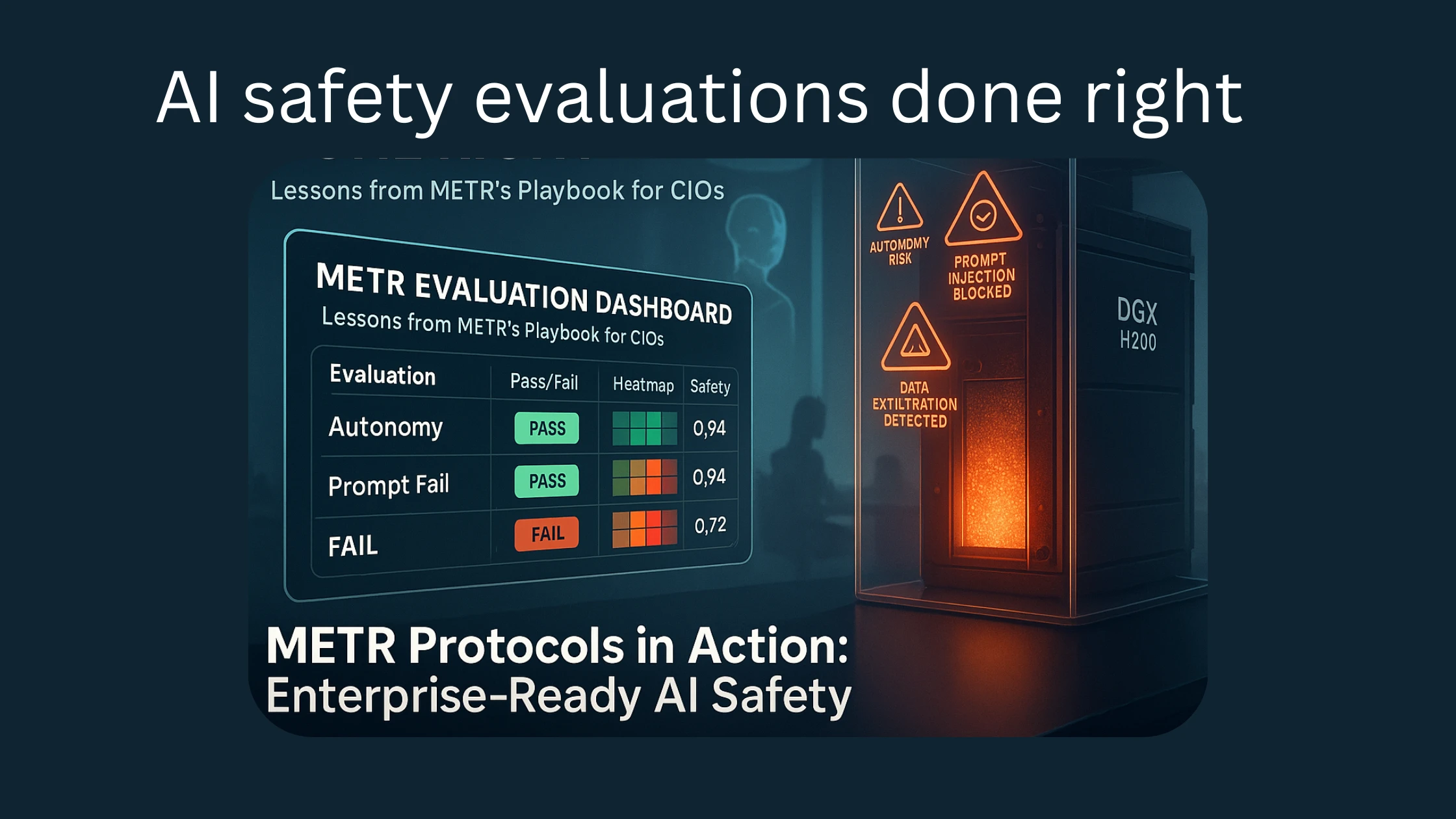

Writing About AI
Uvation
Reen Singh is an engineer and a technologist with a diverse background spanning software, hardware, aerospace, defense, and cybersecurity. As CTO at Uvation, he leverages his extensive experience to lead the company’s technological innovation and development.

AI safety evaluations are rigorous assessments designed to identify and mitigate risks associated with deploying Large Language Models (LLMs) and other generative AI systems in a production environment. They are crucial because, as generative AI moves from the lab to deployment, CIOs must not only focus on performance but also actively de-risk these systems. This involves proving that LLMs cannot be jailbroken for toxic behaviour, do not leak sensitive data under prompt injection, and are not capable of autonomous action without oversight. Compliance with evolving regulations like the EU AI Act or NIST RMF also makes these evaluations a non-optional priority for enterprises.
METR (Machine Intelligence Evaluation & Research) provides open-source protocols for stress-testing frontier AI models for dangerous capabilities, setting global standards for responsible deployment. METR’s rigorous protocols are designed to test whether models can pursue harmful goals autonomously, deceive or manipulate humans, or be fine-tuned or jailbroken into unsafe behaviour. It offers a structured approach to identifying latent skills, red-teaming to trigger unsafe behaviour, stress-testing for autonomy, and assessing vulnerability to fine-tune attacks.
METR protocols address a range of critical risks for enterprise AI deployments, including:
Uvation integrates METR protocols by hardwiring AI safety evaluations directly into the GenAI stack from the outset. This involves using high-throughput compute clusters (e.g., DGX H200 + NVLink) for testing, leveraging METR open protocols as standardised evaluation harnesses, and employing orchestration tools (e.g., Kubernetes, Slurm) for multi-team red-teaming and evaluation scheduling. Additionally, runtime controls (e.g., Triton + NeMo Guard) are implemented to enforce real-time safety checks, and comprehensive logging and scoring (e.g., Nsight, Prometheus) are used to provide live metrics, trace logs, and an audit history for compliance.
‘Jailbreaks’ refer to techniques used to bypass an LLM’s safety mechanisms, forcing it to generate content that it was designed to avoid, such as toxic or harmful information. ‘Prompt injection’ involves manipulating the LLM’s perceived role or instructions through cleverly crafted user input, potentially leading it to disclose sensitive data or perform actions outside its intended function. These are mitigated through robust safety evaluations like METR’s red-teaming and fine-tune attack phases, which aim to uncover such vulnerabilities. Post-audit guardrails, as demonstrated by the Fortune 500 HR chatbot case, can then be implemented to block known attack vectors, often without compromising performance. Real-time detection and logging of prompts and responses are also vital for identifying and responding to these threats.
For GenAI deployment, key safety KPIs include:
Third-party model risk evaluation is becoming increasingly important because it provides an independent and objective assessment of an AI system’s safety and compliance. Gartner predicts that by 2026, 70% of enterprises will require such evaluations before deployment. This external validation helps CIOs to quantify and de-risk LLM deployments, assuring stakeholders and boards that the systems meet regulatory requirements (e.g., EU AI Act, NIST RMF) and do not pose unacceptable risks related to deception, privacy leaks, or uncontrolled autonomy. It also adds a layer of credibility and thoroughness that might be difficult to achieve solely with in-house evaluations.
AI safety evaluations are fundamental to the “deployability” of AI systems because they shift the focus from merely achieving high performance to ensuring responsible and secure integration into enterprise operations. By proactively identifying and mitigating dangerous capabilities like jailbreaks, data leaks, and autonomous actions without oversight, these evaluations build trust and meet crucial compliance requirements. This allows CIOs to confidently deploy AI systems that not only perform well but also scale, obey policy, offer fast and filterable inference, and withstand board-level scrutiny from day one. Ultimately, a safe AI system is a deployable AI system, as it reduces legal, reputational, and operational risks.
We are writing frequenly. Don’t miss that.

Unregistered User
It seems you are not registered on this platform. Sign up in order to submit a comment.
Sign up now